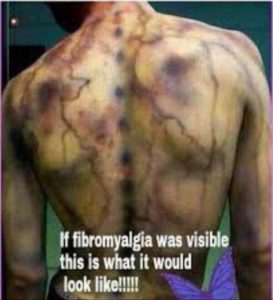Here is some of the information I recently shared in my January newsletter. Each newsletter has a specific focus. This month is focused on chronic pain and fibromyalgia information. If you would be interested in receiving my newsletters, please head over to my contact page and sign up.
STUDIES and ARTICLES
I receive a weekly update on anything published anywhere on the internet that includes information about chronic pain problems. I try to glean the best of the information and provide a brief synopsis of the information. If you come across any information that you think would be good to share, please also feel free to pass that information along to: info@holistichealingarts.net
1. An article titled Myofascial Pelvic Pain: Rationale and Treatment published in Current Bladder Dysfunction Reports in Mar 2015, states: Chronic pelvic pain, in its many forms, commonly has a myofascial component that must be considered in the evaluation and treatment of women and men seeking medical care. ..Myofascial pelvic pain can develop as a result of a trigger point within the pelvic floor musculature or from extra-pelvic muscles that can refer into the pelvic region. Identification and appropriate therapeutic management of the myofascial trigger points is paramount to successful treatment of the pain and symptoms associated with chronic pelvic pain.
2. An article titled Chronic, non-visceral abdominal pain, published in Gut: British Medical Journal in 1994 gives a great explanation of an assessment tool known as Carnett’s Sign, which helps determine if abdominal pain is visceral or from the abdominal wall.
3. An article titled Fascia, Proprioception, and Chronic Pain by Dr. Schierling and published on his blog, cites a number of research articles regarding the relationship between fascia and spindle cells, Ruffini and Pacini corpuscles andGolgii organs. Some important points from the article:
“…muscle spindles, the chief proprioceptive cell affecting our muscles, are not in the muscle, but in the fascia surrounding the muscle and its muscle bundles…
“…abundant innervation of the fascia consisting of both free nerve endings and encapsulated receptors, in particular, Ruffini and Pacini corpuscles.”
“ …hypothesis that the fascia plays an important role in proprioception, especially dynamic proprioception…"
“…now recognized that fascial network is one of our richest sensory organs.”
4. A study titled Analgesic effects of transcutaneous electrical nerve stimulation (TENS) in patients with fibromyalgia: a systematic review, published in Ten Primary Jul 2018, concluded: Treatment with TENS is effective for reducing pain in people with fibromyalgia. In addition, the inclusion of TENS in therapeutic exercise programs seems to have a greater effect than practicing therapeutic exercise in isolation.
5. A study titled Effects of vitamin D optimization on quality of life of patients with fibromyalgia: a randomized controlled trial, published in Med J Islam Repub Iran in Apr 2018, concludes: …vitamin D supplementation has significant therapeutic benefits in the management of FMS especially in pain reduction.
6. A study titled Effects of Sleep Fragmentation and Induced Mood on Pain Tolerance and Pain Sensitivity in Young Healthy Adults, published in Front. Psychol Oct 2018 concluded: Experimental research exploring the sleep pain relationship has typically focused on total or partial sleep deprivation, hereby failing to reproduce the more fragmented sleep pattern typically observed in patients with chronic pain…this study suggests that even one night of fragmented sleep has a negative impact on the perception of pain intensity, but not pain tolerance or pain inhibition.
7. A study, titled The effect of cryotherapy on fibromyalgia: a randomized clinical trial carried out in a cryosauna cabin and published in Rheumatology International, Dec 2018, concluded: Whole Body Cryotherapy during 3 weeks appears to produce a beneficial effect compared to no cold treatment in terms of pain and impact of disease in Fibromyalgia.
8. A study titled A systematic review of the effects of strength training in patients with fibromyalgia: clinical outcomes and design considerations, published in Advances in Rheumatology Oct 2018 concludes: The main results included reduction in pain, fatigue, number of tender points, depression, and anxiety, with increased functional capacity and quality of life. Current evidence demonstrates that Strength Training is beneficial and can be used to treat Fibromyalgia.
9. A study titled Effects of dance on pain in patients with fibromyalgia: a systematic review and meta-analysis, published in Evid Based Complement Alternat Med in Oct 2018, concludes: dance-based intervention programs can be an effective intervention for people suffering from fibromyalgia, leading to a significant reduction of the level of pain with an effect size the can be considered as large.
10. A study titled Fibromyalgia: Increased reactivity of the muscle membrane and a role of central regulation, published in Clinical Neurophysiology in Jan 2019 concludes: …muscle membrane propagation speed increases independently of the force load or amount of muscle activity produced. When adopting a limb position, the patients show an augmented muscle membrane reaction, suggesting deregulation from higher neural centers.

A depiction of Fibromyalgia pain